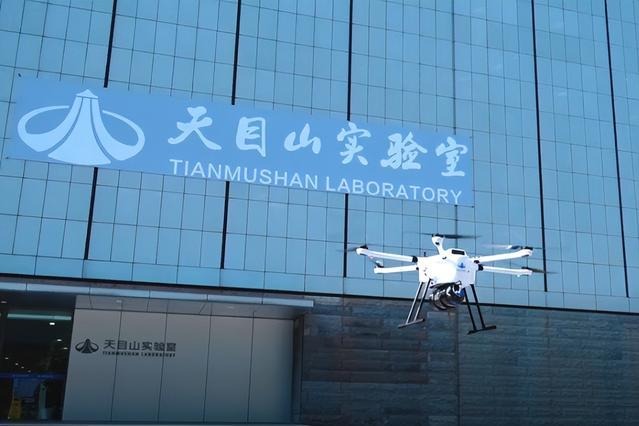Chilly, Chili Chicken

A taste of Sichuan for the discerning palate 集麻辣鲜香嫩爽于一身的川菜名品口水鸡
You may know Sichuan cuisine (川菜 chuāncài) via its signature dish — the universally adored Kung Pow Chicken (宫保鸡丁 gōngbǎo jīdīng) — but there is so much more to explore in this unique culinary style. Rich with flavor and plenty of oil, it is one of the most beloved folk cuisines in China. From high-end restaurants to neighborhood diners, there's no lack of Sichuan flavor in China. When ordering a Sichuan dish, you will often be asked: "Can you hold your spice?" (能吃辣吗?néng chī là ma?). Sichuan dishes are reserved for the strong of heart, but don't be afraid to say yes; you don't want to miss out on these unique flavors.
"Mouth-watering chicken", or 口水鸡 (kǒushuǐjī), is a must-have on any Sichuan restaurant menu and a regular cold dish on the dining tables of almost every family in Sichuan. Infused with the spirit of Sichuan cuisine with its use of chili and peppercorns, its relatively simple preparation will enable you to bring these complex flavors into your own kitchen.
Fan Gang, a chef at the 1949 Hidden City restaurant in Beijing, recommends the "three-yellow chicken", or 三黄鸡 (sān huáng jī), for the main ingredient. You don't have to look far for this particular type of chicken. With its yellow beak, feet and feathers, it is the most common type of chicken in China. Raised free-range on hillsides, the three-yellow chicken is famous for its tenderness, fresh flavor and nutritional value. Although the leg meat is the most tasty part, chef Fan suggests that the chicken be kept intact while cooking to lock the moisture inside.
The heavy use of chili oil, made by frying chilies in rapeseed oil, gives the dish a savory and spicy taste. The oil can be bought from any supermarket shelf in China. Chili was introduced to China from South America in the late 16th century. Slowly working its way inland from the Southeast coast along the Yangtze River, the spice was welcomed by people in Sichuan, Hunan, Hubei and Guizhou. By 1800, chili was widely planted in those areas and was incorporated as an essential part of the local diet. However, Sichuan people in particular, have a long tradition of enjoying strong flavors. According to the Chronicles of Huayang (《华阳国志》huá yáng guó zhì), the fourth gazetteer focusing on the southwest areas of ancient China, early residents of Sichuan "celebrated flavors and loved pungent tastes" (尚滋味,好辛香 shàng zīwèi, hào xīn xiāng). During that time, these pungent tastes were of scallion and onion. The arrival of chili seemed to fit right in with this long standing tradition. Today, in Sichuan, chili is called 海椒 (hǎijiāo, pepper from overseas), instead of 辣椒 (làjiāo, hot pepper) used everywhere else in China.
The success of "mouth-watering chicken" relies on another critical ingredient — prickly ash seeds, or Sichuan peppercorns (花椒 huājiāo). The combined taste of chili and peppercorns is known as 麻辣 (málà, tingling spice). Normally, the peppercorn seeds are collected and baked to a brownish-red color. When kept green, the peppercorn seeds are referred to as 藤椒 (téngjiāo) which can be made into another flavored oil: green peppercorn oil. Again, you can find a bottle in Chinese supermarkets.
The heavy use of chili and peppercorns in Sichuan cuisine is a result of the unique local environment, where the moisture is retained in the basin areas of the province. Traditional Chinese medicine maintains that the moisture also seeps into the human body, resulting in internal hydration and coolness.
As much as you might enjoy the idea of "authentic" Sichuan food, in dry areas, too much spicy food can be bad for your health. This recipe for mouth-watering chicken recommended by chef Fan strives to balance overall the taste and the essence of Sichuan cuisine. Pair this spicy cold chicken dish with cold tea or beer for the perfect mix on a scorching summer day.
Recipe / Mouth-watering chicken
Ingredients:

(Recipe serves three)
One whole chicken 整鸡 zhěngjī
10g scallion 葱 cōng
10g ginger 姜 jiāng
100ml chili oil 辣椒油 làjiāoyóu
Two tablespoons of green peppercorn oil 藤椒油 téngjiāo yóu
2 tablespoons of sesame paste 芝麻酱 zhīma jiàng
3 chilies 红辣椒 hónglàjiāo
10g of peanuts, fried 花生米 huāshēngmǐ
5g sesame seeds, toasted 芝麻 zhīma
5g parsley 香菜 xiāngcài
Method:
1. Choose a fresh, whole chicken and clean thoroughly. Boil enough water to completely submerge the chicken. When the water is boiling, switch to a low heat, place the chicken in the hot water, and keep the pot uncovered. Add scallions and ginger slices for a base flavour and to remove the smell of the raw meat. Boil for 30 minutes.
2. Fill a large container with ice-water. Set the boiled chicken in the water for three hours to firm it up. This will keep its texture tender and smooth, while also keeping the skin crisp and chewy.
3. Slit the chicken along one side of its spine and cut the spine out. Separate the wings and legs first and then cut the chicken in half and into smaller slices. Get rid of any congealed fat and small bones in the process.
4. To prepare the sauce, mix the chili oil, green peppercorn oil, sesame paste and chopped chilies. Stir until even. Place the cold chicken slices in a large bowl. Sprinkle fried peanuts and then pour the chili sauce. Add a few drizzles of toasted sesame seeds. Place parsley slices on top of the dish for decoration. Serve cold.
Courtesy of The World of Chinese, www.theworldofchinese.com
The World of Chinese

(China Daily Africa Weekly 11/01/2013 page27)
Today's Top News
- China remembers victims of Nanjing Massacre, 88 years on
- New plan will be a road map for a stronger future
- Taiwan's character of the year a vote against confrontation
- Strengthened resilience key for economy
- Video sheds new light on Japan's wartime atrocities
- Xi: World yearns for peace, trust more than ever






























